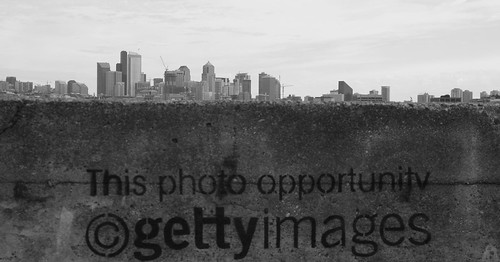
As someone who occasionally needs to find stock photography for various design projects (stock photography is like design shake and bake), I’ve used several services ranging from free to painfully expensive (Getty Images). For some Getty Images photos, you might pay a few hundred bucks to borrow a high resolution print-ready image. Considering they might pay the photographer a couple bills and then get to resell the images as many times as they can at no additional cost, I imagine it’s a pretty high-margin business at the top end.
Unsurprisingly, as low-cost microstock photo providers like iStockPhotos.com and Stock.XCHNG have emerged onto the scene, in true reflection of the actual costs involved, they’ve been quickly snapped up by larger companies like Getty Images and Jupiter Media. As soon as iStockPhotos.com was acquired, the prices went up dramatically. With most of these microstock sites, the initial service is attractively priced and contributors are compensated adequately, then as they scale, prices increase and payouts decrease, as one would expect.
It’s a clever business, but it’s ripe for disintermediation AdSense-style. All you need to do is create a truly open marketplace for stock photography, simplify the licensing issues, provide the delivery mechanism to the creators, and split the revenue reasonably well. This model is emerging accidentally at Flickr but it will likely be snuffed out before it has a chance to change anything.
The fact is, the stock photo industry is ripe for a shake up due to the wide availability of high quality digital photography and the proliferation of content creators, which should, in theory, keep driving prices down while enabling more producers to participate. Yet, it is likely that nothing fundamental will change because few but Getty sees how things could/should be given the enabling dictate of technology. This is unfortunate and represents a missed opportunity for both Flickr and Yahoo!, which could turn microstock into a wildly successful and scalable business. Flickr could literally flip a switch and allow every user to sell their images. Obviously some would sell well and some would never sell.
Originally Flickr set out to be a community based on photography. Due to its open, communitarian nature, many Flickr users make their work available for use free with attribution. As a result you can often find very nice photos available under the Creative Commons license. If Flickr users continue to supply the world with free high-resolution photos, it will impact providers like Getty. In this light, Getty’s recent deal with Flickr to ‘invite’ certain Flickr users to participate as paid contributors to Getty Images makes a lot of sense strategically. In the deal, Getty cherry picks the top Flickr contributors and effectively co-opts the Flickr community as part of their stock photo empire. After all, how many photographers will turn down filthy lucre for something they’d be doing anyway?
By cherry picking the best Flickr users and not opening up the party to all Flickr users, they avoid the casual photography ghetto, pay off the best users only whenever something sells, and keep their margins high for the rest of their products by strengthening their hold on an industry through exclusive deals.
Although the author of the below post competes with Getty through his product, he makes a few good points:
As much as Getty would like to position this move as an open embrace of the community, it’s not. Instead, it’s a way to lock out competition, and allow them to continue with status quo. They’re hopeful that this infusion of content can somehow staunch the flat/declining growth of their traditional licensing revenue, and why not? Their growth has historically been predicated on acquisition of boutique agency content until they bought virtually everyone up, and alienated thousands of photographers and buyers in the process.
In this new deal, Getty Images will hand-select photographers from flickr, and tie up their images in their standard exclusive agreement and compensation schedule. This means 20% on royalty-free images, and an average 35% on rights-managed images. It also means the individual cannot determine which images are submitted, nor set a price point or the license type. Exclusivity means that the individual cannot determine the best distribution channels for his/her images.
Let’s hope Google or someone else creates something to step in where Flickr / Yahoo! has faltered.